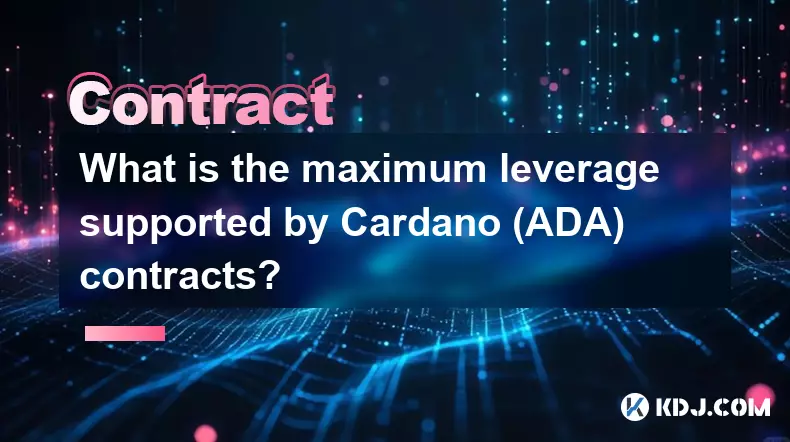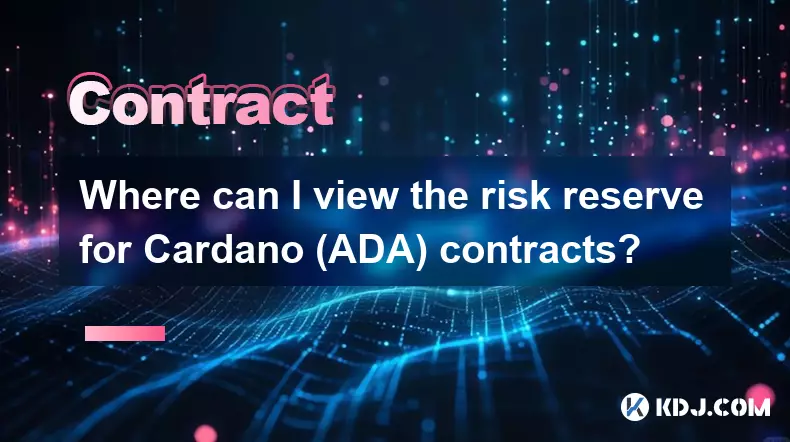-
 bitcoin
bitcoin $114779.865156 USD
2.30% -
 ethereum
ethereum $4226.519789 USD
2.39% -
 tether
tether $1.000545 USD
0.04% -
 xrp
xrp $2.890223 USD
0.92% -
 bnb
bnb $1030.029301 USD
2.95% -
 solana
solana $212.824944 USD
1.69% -
 usd-coin
usd-coin $0.999757 USD
0.01% -
 dogecoin
dogecoin $0.234961 USD
-0.27% -
 tron
tron $0.337174 USD
0.42% -
 cardano
cardano $0.804783 USD
0.09% -
 hyperliquid
hyperliquid $45.748770 USD
-2.85% -
 chainlink
chainlink $21.699170 USD
0.82% -
 ethena-usde
ethena-usde $1.001452 USD
0.08% -
 avalanche
avalanche $30.237800 USD
1.14% -
 stellar
stellar $0.372604 USD
1.52%
What are the position limits for Bitcoin futures?
Bitcoin futures position limits, set by exchanges like CME and influenced by regulation and liquidity, prevent market manipulation and vary by contract type, with exemptions for hedgers.
Sep 29, 2025 at 02:54 am

Understanding Bitcoin Futures Position Limits
1. Position limits in Bitcoin futures are regulatory measures designed to prevent market manipulation and excessive concentration of contracts in a single account or entity. These limits vary depending on the exchange and the specific contract being traded. For instance, the Chicago Mercantile Exchange (CME) enforces position limits during the delivery month as well as aggregate speculative limits across all months.
2. The CFTC (Commodity Futures Trading Commission) sets federal position limits for certain commodities, and while Bitcoin is not classified as a traditional commodity, exchanges like CME self-regulate by imposing their own thresholds. At CME, the spot-month limit for Bitcoin futures is typically set at 100 contracts, with an aggregate speculative limit that may extend to several hundred contracts based on open interest and market conditions.
3. Exchanges such as Bakkt and Deribit also implement position controls, though their frameworks differ. Bakkt, operating under ICE regulation, aligns its limits with traditional financial instruments, often capping positions at levels proportionate to deliverable supply. Deribit, a dominant player in crypto-native derivatives, uses dynamic risk management tools rather than fixed caps, adjusting margin requirements and liquidation protocols based on size and volatility.
4. Market participants must distinguish between hedging exemptions and speculative limits. Entities engaged in bona fide hedging activities can apply for exemptions that allow them to exceed standard position caps. This is particularly relevant for institutional players managing large portfolios exposed to Bitcoin price fluctuations.
5. Enforcement mechanisms include real-time monitoring, automated alerts, and mandatory reporting above threshold levels. Traders found violating position limits face penalties ranging from forced liquidation to suspension of trading privileges. Regulatory transparency ensures that aggregate positions are disclosed periodically, promoting fairness and reducing systemic risk.
Factors Influencing Position Limit Policies
1. Liquidity depth plays a critical role in determining allowable position sizes. Contracts with higher trading volume and open interest tend to support larger limits, as the market can absorb big trades without significant slippage. Bitcoin futures on CME have seen increasing capacity due to growing institutional participation.
2. Volatility regimes directly impact how exchanges calibrate their risk models. During periods of sharp price swings—such as those seen after macroeconomic announcements or security breaches—exchanges may temporarily lower effective position limits through increased margin requirements or tighter circuit breakers.
3. Regulatory jurisdiction shapes the stringency of rules. U.S.-based platforms adhere to stricter oversight compared to offshore venues. This divergence creates variation in position limits, with domestic exchanges generally enforcing lower caps to comply with CFTC guidelines and anti-market manipulation statutes.
4. Delivery mechanics influence spot-month restrictions. Since physically settled contracts require actual Bitcoin transfer upon expiry, position limits tighten near expiration dates to ensure orderly settlement and prevent squeezes. Cash-settled products offer more flexibility but still impose limits to maintain pricing integrity.
5. Competitive dynamics push exchanges to balance risk control with trader appeal. Overly restrictive limits deter high-volume participants, so platforms continuously assess optimal thresholds that safeguard market health while remaining attractive to global traders.
Impact on Institutional and Retail Traders
1. Institutional investors often operate near or at position limits, necessitating sophisticated strategies like spreading across multiple accounts or utilizing OTC swaps to bypass exchange-based caps. Their ability to request hedging exemptions gives them operational advantages over smaller players.
2. Retail traders are rarely affected by hard position limits due to smaller trade sizes, but they benefit indirectly from the stability these rules provide. Reduced manipulation risk and smoother price action enhance overall market confidence.
3. Arbitrageurs rely on precise positioning across correlated instruments, including spot markets, perpetual swaps, and futures. Position limits can constrain arbitrage efficiency, especially when discrepancies arise between regulated futures and unregulated derivatives.
4. Algorithmic trading firms adjust their execution logic based on known position thresholds. Strategies involving large order slicing or inter-exchange routing are optimized to stay within compliance while maximizing fill rates and minimizing market impact.
Exceeding position limits triggers automatic surveillance flags and potential intervention by exchange risk teams, making adherence essential for sustained trading operations.Common Questions About Bitcoin Futures Position Limits
What happens if a trader exceeds the position limit?Exceeding the limit typically results in immediate notification from the exchange, followed by mandatory reduction of the position within a specified timeframe. Failure to comply can lead to forced liquidation, fines, or temporary suspension.
Do all Bitcoin futures contracts have the same position limits?No, position limits differ by exchange, contract type (cash vs. physical settlement), and expiration cycle. For example, non-deliverable forward-style contracts may have higher thresholds than deliverable ones.
Can position limits change during volatile market conditions?Yes, exchanges reserve the right to modify limits or enforce tighter risk parameters during extreme volatility. This includes raising margin requirements or lowering allowable positions temporarily.
Are there ways to legally hold positions beyond the stated limits?Hedgers with verifiable exposure can apply for exemptions. Additionally, some traders use baskets of related instruments or off-exchange derivatives to manage economic exposure without breaching exchange-specific caps.
Disclaimer:info@kdj.com
The information provided is not trading advice. kdj.com does not assume any responsibility for any investments made based on the information provided in this article. Cryptocurrencies are highly volatile and it is highly recommended that you invest with caution after thorough research!
If you believe that the content used on this website infringes your copyright, please contact us immediately (info@kdj.com) and we will delete it promptly.
- Altcoins Primed for 100x Gains: Cryptocurrencies to Watch
- 2025-09-30 22:45:16
- Pi Network, OKX, and Withdrawal Woes: What's Going On?
- 2025-09-30 23:05:12
- Debut Auction & XRP ETF Watch: October 18th Auction Set, Crypto's Big Day?
- 2025-09-30 22:45:16
- Allbridge, Algorand, and Stablecoins: Bridging the Gap in DeFi
- 2025-09-30 23:05:12
- Navigating Solana Wallets: Your Guide to Secure Crypto in 2025
- 2025-09-30 22:50:11
- Shiba Inu's Uptober Rally: Will Exchange Supply Fuel the Fire?
- 2025-09-30 23:10:17
Related knowledge

What is the maximum leverage supported by Cardano (ADA) contracts?
Sep 30,2025 at 03:37am
Understanding Leverage in ADA Derivatives Trading1. Leverage in cryptocurrency futures and perpetual contracts allows traders to control larger positi...

How do I use the scheduled order feature in Cardano (ADA) contracts?
Sep 28,2025 at 10:18pm
Understanding Scheduled Orders in Cardano Smart ContractsCardano operates on a proof-of-stakes consensus mechanism and uses the Plutus scripting langu...

Can I modify the leverage of Cardano (ADA) contracts after opening a position?
Sep 30,2025 at 08:19am
Understanding Leverage in Cardano (ADA) Futures Trading1. Leverage allows traders to control larger positions using a smaller amount of capital. In th...

Where can I view the risk reserve for Cardano (ADA) contracts?
Sep 29,2025 at 09:19pm
Risk Reserve Overview in Cardano (ADA) Ecosystem1. The concept of a risk reserve within the Cardano blockchain does not align with traditional central...

How do I enable the "scalping-only" mode for Cardano (ADA) contracts?
Sep 24,2025 at 03:19am
Understanding Scalping Strategies in Crypto Derivatives1. Scalping in cryptocurrency trading refers to executing multiple short-term trades within min...

What is the settlement time for Cardano (ADA) contracts?
Sep 28,2025 at 04:18am
Understanding Cardano's Contract Settlement Mechanism1. Cardano operates on a proof-of-stake consensus model known as Ouroboros, which fundamentally i...

What is the maximum leverage supported by Cardano (ADA) contracts?
Sep 30,2025 at 03:37am
Understanding Leverage in ADA Derivatives Trading1. Leverage in cryptocurrency futures and perpetual contracts allows traders to control larger positi...

How do I use the scheduled order feature in Cardano (ADA) contracts?
Sep 28,2025 at 10:18pm
Understanding Scheduled Orders in Cardano Smart ContractsCardano operates on a proof-of-stakes consensus mechanism and uses the Plutus scripting langu...

Can I modify the leverage of Cardano (ADA) contracts after opening a position?
Sep 30,2025 at 08:19am
Understanding Leverage in Cardano (ADA) Futures Trading1. Leverage allows traders to control larger positions using a smaller amount of capital. In th...

Where can I view the risk reserve for Cardano (ADA) contracts?
Sep 29,2025 at 09:19pm
Risk Reserve Overview in Cardano (ADA) Ecosystem1. The concept of a risk reserve within the Cardano blockchain does not align with traditional central...

How do I enable the "scalping-only" mode for Cardano (ADA) contracts?
Sep 24,2025 at 03:19am
Understanding Scalping Strategies in Crypto Derivatives1. Scalping in cryptocurrency trading refers to executing multiple short-term trades within min...

What is the settlement time for Cardano (ADA) contracts?
Sep 28,2025 at 04:18am
Understanding Cardano's Contract Settlement Mechanism1. Cardano operates on a proof-of-stake consensus model known as Ouroboros, which fundamentally i...
See all articles










































































